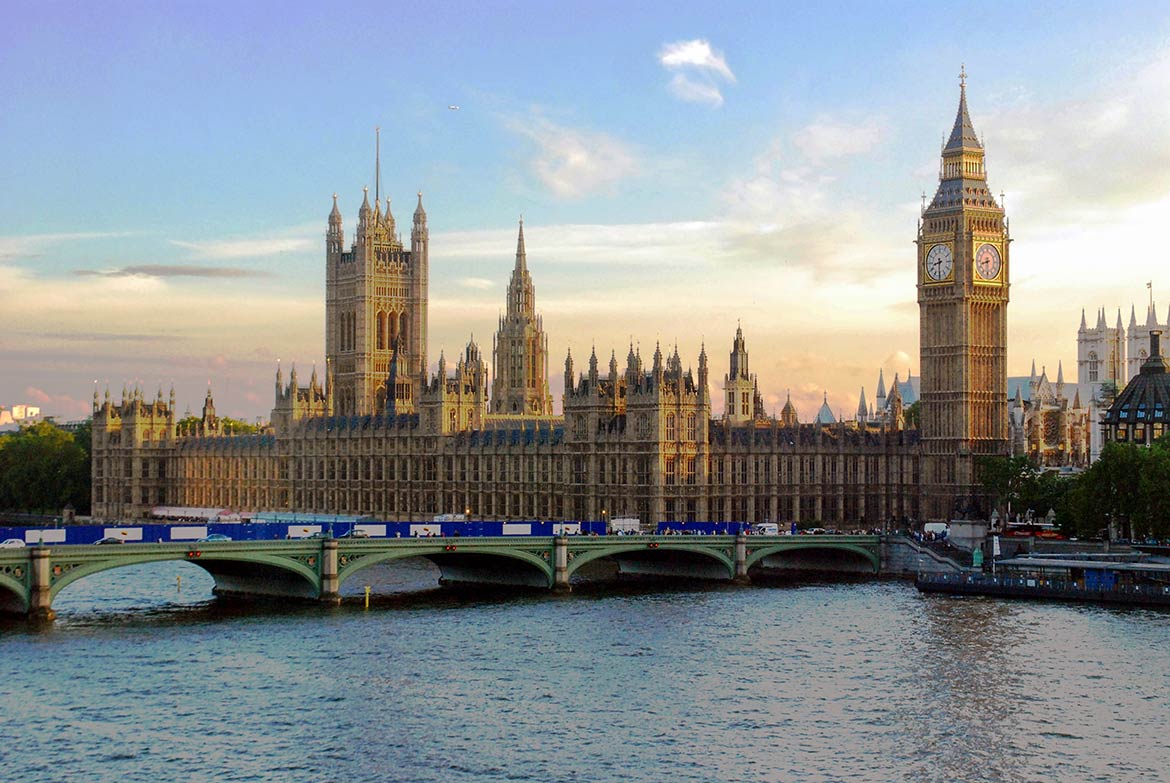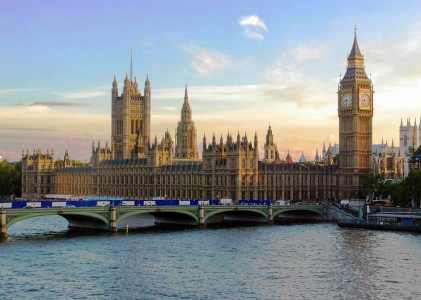
Previously we talked about where the United Kingdome located, what countries are the part of the UK, what are their capitals further we looked into what area and how much of a land The UK contains. Now we are going to talk about how UK has divided its land into two different kinds of zone, Highland zone and low land zone. This separation runs from the mouth of the River Exe in the southwest to the mouth of the Tees in the northeast. The 700-foot (213-meter) contour, or the line separating the older north and west layers from the newer southeastern strata, provides a more precise estimate of the highlands’ extent.
The Highland zone:
The highlands were formed over a lengthy period of time, although their altitudes are low when compared to European counterparts, with Ben Nevis, the highest peak, standing at only 4,406 feet (1,343 meters) above sea level. Furthermore, raised plateaus with relatively smooth surfaces are common in truly mountainous places above 2,000 feet (600 meters), serving as reminders of the effects of previous times of erosion.
The old underlying rocks in Scotland’s three main geographic regions run northeast-southwest. The Midland Valley, a rift valley or subsided structural block that connects the northern Highlands and the Southern Uplands, separates them (or Central Lowlands). The Grampian Mountains, which rise 1,000–3,600 feet (300–1,100 meters) above sea level, form the heart of the Highlands, with the Cairngorm Mountains rising to almost 4,000 feet (1,200 meters).
Numerous large valleys, or broad mountains, crisscross this magnificent mountain scenery. The east is spiced up by extensive regions of lowland, frequently surrounded by long lines of sand dunes. The Buchan peninsula, the estuarine flats of the Moray Firth, and the Caithness plain—all low-lying areas—contrast sharply with the mountain scenery and have smoother outlines than the glacier-scoured landscapes of the west, where northeast-facing hollows, or corries, separated by knife-edge ridges and deep glens, sculpt the surfaces left by earlier erosion. The numerous freshwater lochs (lakes) add to the untamed splendor of the environment. Glen Mor, where the Caledonian Canal currently runs through the chain of lakes that includes Loch Ness, is the result of a massive structural sideways rupture in the entire North West Highlands. To the northwest of Glen Mor, land is mostly divided among agricultural smallholdings, or crofts; habitation is sporadic and mostly coastal, reflecting the dramatic subdivision of a highland massif slashed and plucked by Ice Age glaciers. Many sea-drowned, glacier-widened river valleys (fjords) cut deep into the mountains, their outliers rising from the sea in stately, elongated peninsulas or emerging as hundreds of offshore islands.
The Scottish Southern Uplands, in comparison to the Scottish Highlands, have a more subdued relief, with altitudes never exceeding 2,800 feet (850 meters). The Cheviots are the principal hill masses, reaching elevations of 2,676 feet (816 meters), with only Merrick and Broad Law having elevations above the 2,700-foot (830-meter) contour line. These uplands are characterized by broad plateaus split by numerous dales, with most rivers flowing westward over the prevailing northeast-southwest trend, following the general slope of the plateau, toward the Solway Firth or the Firth of Clyde.
Mountainous scenery is periodically created by massive blocks of granite and the jagged imprint of ancient glaciers. Between the Lammermuir and Cheviot hills lies a large lowland expanse formed by the Tweed’s valley network and its many tributaries.
The Midland Valley is sandwiched between two massive structural faults. The Highlands’ northern border is a wall-like escarpment, but the Southern Uplands’ border is only sharp towards the ocean. High ground—often formed of solid, resistant slabs of volcanic rock—meets the eye in all directions, rising above the low-lying plains that side the rivers and the deeply penetrating estuaries of the Firth of Clyde and Firth of Forth.
In Northern Ireland, structural expansions of the Scottish Highlands can be seen in the generally rough mountain landscape, as well as the peat-covered tops of the Sperrin Mountains, which rise to 2,241 feet (683 meters). The Mourne Mountains, a lovely cluster of granite summits, the loftiest of which, Slieve Donard, rises to an elevation of 2,789 feet (850 meters) within 2 miles (3.2 km) of the sea, are the western continuation of Scotland’s Southern Uplands but only reach elevations of more than 500 feet (150 meters) in limited areas. An outpouring of basaltic lavas has built a massive plateau in Northern Ireland’s central region, which corresponds to Scotland’s Midland Valley, part of which is filled by the shallow Lough Neagh, the biggest freshwater lake in the British Isles.
From north to south, the highlands of England and Wales are divided into four main upland masses: the Pennines, Cumbrian Mountains, Cambrian Mountains, and the South West Peninsula. Although the Pennines are thought to cease at the River Tyne gap in the north, the surface features of some hills in Northumberland are strikingly comparable to those of the northern Pennines.
Because many of the valleys, however deep, comprise such a small fraction of the total area, the windswept moorland between them appears practically featureless, the general surface of the asymmetrically arched backbone (anticline) of the Pennines is strikingly smooth. This is especially true of the scenery of Alston, Cumbria (Cumberland), which stands out as an almost rectangular block of high moorland plateau with solitary peaks (known to geographers as monadnocks) rising up above it, cut off by faults on its north, west, and south sides.
Deep and picturesque dales (valleys) cut through the Pennine plateau further south. Millstone grit forms the dales’ rugged edges, while underneath them run streams stepped by waterfalls. A grassy upland makes up the southernmost part of the Pennines. It is distinguished by arid valleys, steep-sided gorges, and underground streams and caverns of a limestone drainage system, rather than the dismal moorland that might be expected at this elevation. It is more than 2,000 feet (610 meters) above sea level in places. The larger dales are more densely forested at lower levels, and the trees stand out against a backdrop of stark white-gray granite cliffs. Older rocks fall beneath newer layers on both Pennine flanks, and the uplands blend into the surrounding coastal lowlands.
The Cumbrian Mountains, which comprise the famed Lake District immortalized in poetry by William Wordsworth and other Lake poets, are a small, compact mountain range west of the Pennines. The northern Cumbrian Mountains, which are made up of strong slate rock, are characterized by several deep canyons divided by narrow ridges and high summits. To the south, there are larger swaths of level upland produced by thick lava beds and ash spewed out by previous volcanoes. The volcanic belt is primarily an uneven upland with deep, narrow valleys, and it includes England’s highest point, Scafell Pike, at 3,210 feet (978 meters), and Helvellyn, at 3,116 feet (978 meters) (950 meters). A characteristic radial drainage pattern is formed by nine rivers pouring out in all directions from the center of this raised dome. Glacial action has enlarged the valleys, which typically feature long, narrow lakes, into a U form, as well as cut corries off the mountainsides and deposited the debris in moraines. Glacial action also truncated ancient tributary valleys, resulting in a number of “hanging valleys.”
Except on the eastern side, where an abrupt break in the slope typically indicates the transition to the English lowlands, the Cambrian Mountains, which form the center of Wales, are well delineated by the sea. The ancient and austere surfaces have been continually worn down by erosion cycles. Glacial processes are responsible for many topographic features, while previous volcanism is responsible for some of the most stunning scenery. North Wales has the most mountainous terrain above 2,000 feet (610 meters). Snowdonia, named after Snowdon (Yr Wyddfa), Wales’ highest point at 3,560 feet (1,085 meters), and its southeastern extensions, Cader Idris and Berwyn, are among them. Central Wales lacks equivalent high places, with the exception of Plynlimon and the Radnor Forest, while the monadnocks of South Wales—particularly the Black Mountains and the Brecon Beacons—stand out in solitary magnificence above the upland terrain. A high plateau is 1,700 to 1,800 feet (520 to 550 meters); an intermediate peneplain, or worn-down surface, is 1,200 to 1,600 feet (370 to 490 meters); and a low peneplain is 700 to 1,100 feet (520 to 550 meters) (210 to 340 meters). The skyline of these smooth, rounded, grass-covered moorlands is amazingly even. A sequence of old wave-cut surfaces can be found below 700 feet (210 meters). From the highland core to the coastal regions, several valleys radiate. These lowlands have provided a shelter for traditional Welsh culture in the west, but English culture has been carried into the highlands by the profoundly penetrating eastern valleys. In the southeast, a larger lowland—a physical and structural extension of the English lowlands—borders the Bristol Channel. The peculiarities of the Welsh shoreline, which stretches over 600 miles (970 kilometers), reveal different responses to the sea’s battering.
Exmoor, where Dunkery Beacon rises to 1,704 feet (519 metres); Dartmoor’s untamed, granite uplands, which reach 2,038 feet (621 meters) at High Willhays; Bodmin Moor; Hensbarrow; Carn Brea; and the Penwith highland, which forms the magnificent extremity of Land’s End. In the Isles of Scilly, 28 miles (45 kilometers) to the southwest, granite reappears above the sea. Despite the elevation differences, the South West’s landscape, like that of many other parts of the UK, has a distinct uniformity of summit heights, with a high series ranging from 1,000 to 1,400 feet (300 to 430 meters), a middle group between 700 and 1,000 feet (210 and 300 meters), and coastal plateaus ranging from 200 to 400 feet (60 and 120 meters). Deep, narrow valleys alternate with flat-topped, step-like sections advancing inland in a network. The peninsular aspect of the South West contributes to its renowned physical attraction; the coastline is unparalleled for its diversity, with both spectacular headlands and magnificent drowned estuaries produced by sea-level variations.
The Lowland Zone:
The lowland zone begins around the Solway Firth in the northwest and extends along the fault-directed Vale of Eden, as measured by the 700-foot (210-meter) contour line (the valley of the River Eden). The small coastal plain that borders the Lake District broadens southward into the flat, glacial-drift-covered Lancashire and Cheshire lowlands, which are home to slow-moving rivers. Except for the limestone plateau north of the River Tees and the North York Moors to the south, the lowlands are continuous east of the Pennine ridge, with extensive exposed sections reaching altitudes of over 1,400 feet (430 meters). The vast Vale of York is west of the North York Moors, merging with the east Midland plain to the south. The Midlands’ newer rocks end at the westernmost edge of the Cambrian Mountains. The lowland continues south along the flat landscapes bordering the lower River Severn, is constrained by the difficult Bristol-Mendip highland, and then spreads out into Somerset’s vast and flat plain. The scarp face of the Cotswolds, part of the discontinuous outcrop of limestones and sandstones that arcs from the Dorset coast in southern England to the Cleveland Hills on Yorkshire’s north coast, forms the eastern horizon of much of the Midland plain. The more solid limestones and sandstones give rise to beautiful 1,000-foot (300-meter) escarpments, but the dip slope is often so low that the area resembles a dissected plateau, eventually flowing on to the clay vales of Oxford, White Horse, Lincoln, and Pickering. These clays also underpin the flat, often reclaimed landscapes of the once-marshy Fens, and the next scarp, the western-facing chalk outcrop (cuesta), undergoes multiple directional shifts near the Wash, a shallow arm of the North Sea.
The chalk scarp is larger and more continuous than the sandstone and limestone outcrops further west. It begins in the north with the Yorkshire Wolds, an open rolling landscape with altitudes of 750 feet (230 meters). The River Humber cuts it off, yet it continues on through the Lincolnshire Wolds. The scarp rises gradually east of the Fens, barely reaching 150 feet (45 meters), before rising to the 807-foot (246-meter) Ivanhoe Beacon in the picturesque Chiltern Hills. The scarp is broken up by several wind gaps, or previous river routes, and the River Thames cuts through it in the Goring Gap. The topography forms a huge dissected plateau with an elevation of 350 to 500 feet where the chalk dip slope is practically level, as in the open Salisbury Plain (110 to 150 meters). Rivers run through the main valleys, but the other valleys are dry.
The chalk outcrop continues into Dorset, but it has been bent along west-to-east lines toward the south. The London and Hampshire basins currently have downfolds that have been filled in by geologically recent sands and clays. The former, an asymmetrical synclinal (or structurally down warped) lowland rimmed by chalk, is dominated by gravel terraces and valley-side benches, with little floodplain; the latter is similarly girdled by chalk, but the southern rim, or monocline, has been cut by the sea in two places to form the picturesque Isle of Wight.
The anticlinal, or structurally up warped, dome of the Weald of Kent and Sussex rises between these two synclinal zones. Because the arch of this immense geologic upfold has long since been eroded away, the North and South Downs’ bordering chalk escarpments are now inward-facing, enclosing a concentric succession of exposed clay vales and sandstone ridges. The English Channel’s seas have undermined and eroded the upfold on the coast, resulting in a stunning series of chalk cliffs facing the European continent, 21 miles (34 km) away at the Strait of Dover, the English Channel’s narrowest point.


Great content! Keep up the good work!